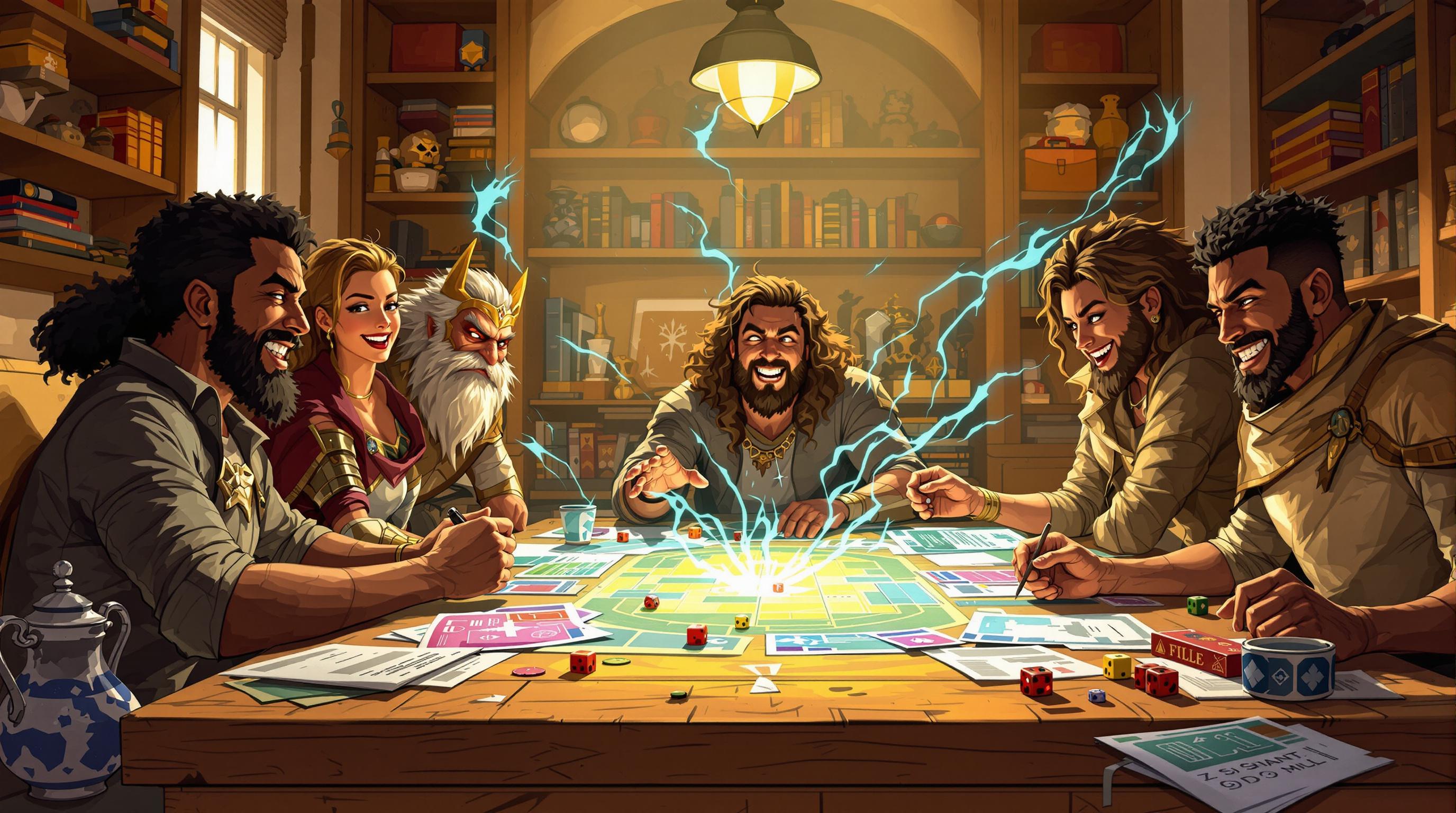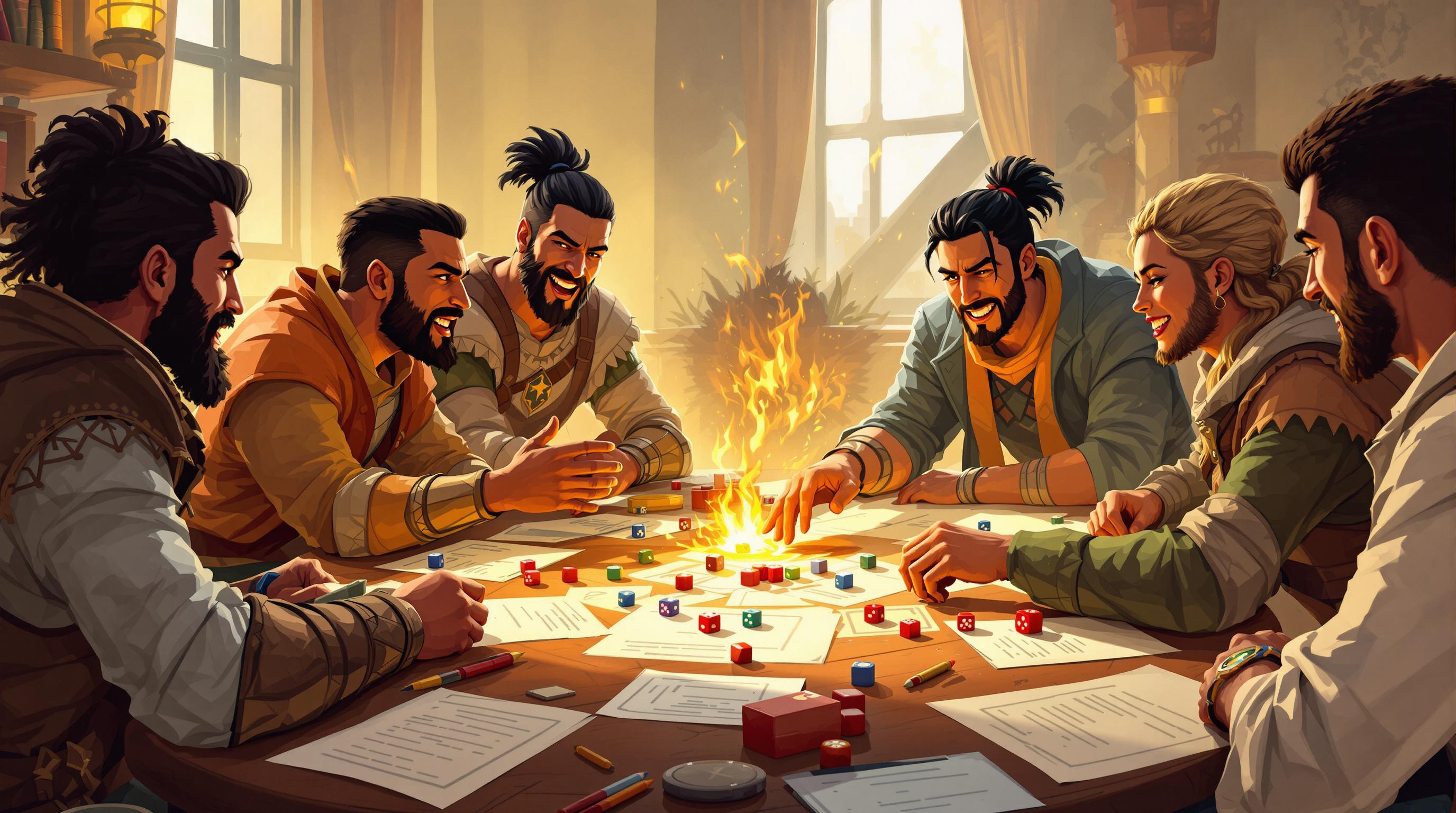Props and handouts can bring your game world to life. From physical artifacts to detailed maps and in-game documents, these tools enhance storytelling and player engagement. Here’s a quick overview of what you’ll learn:
- Types of Props: Visual aids, physical items, and text-based handouts.
- Design Tips: Fonts, materials, and techniques to match your game’s theme.
- Best Practices: When to use props, how to avoid overuse, and ways to engage players.
Whether it’s a weathered map for a medieval quest or a futuristic hologram for a sci-fi campaign, props can deepen immersion without overshadowing the story. Let’s explore how to use them effectively.
How I Create Player Handouts for my D&D Games
Types of Props and Handouts
Props and handouts are a great way to pull players deeper into the story and make the game world feel more real. Each type has its own role in enhancing the experience. Here's a closer look at the main categories and how they can be used.
Visual Props
Visual props, like maps, help players picture the game world. These can range from large-scale world maps for setting the scene to detailed battle mats for combat scenarios. Many high-quality maps, including those from official D&D adventures, are available online at budget-friendly prices for both digital and physical formats [1].
Physical Props
Physical props create a direct, hands-on connection to the game world. They can make moments in the game feel more immediate and real. Here's a quick breakdown:
| Prop Type | Purpose | Example Use |
|---|---|---|
| Artifacts | Important story items | A family heirloom brooch |
| Puzzle Objects | Interactive challenges | A physical puzzle box |
"Players love getting handed real-life, physical artifacts that tie their characters into the ongoing adventure." - Gnome Stew Author [2]
Text-Based Handouts
Text-based handouts are perfect for delivering key details without breaking the immersion. These can include:
- In-Game Documents: Letters, scrolls, or ancient writings.
- Quest Details: Contracts or mission briefings.
- Lore Pieces: Historical records or cryptic prophecies.
To make these documents feel more authentic, try using thicker paper and simple aging techniques. Word processors with decorative fonts can also help keep them readable while staying true to the theme [3].
A clever idea shared on the RPGnet Forums illustrates the creative potential of handouts: "One of my favorites was to hand the PCs a blank notepad. I'd written REALLY HEAVILY on the top sheet and then tore it off. Took all of three seconds for someone to have the bright idea of using a pencil rubbing to reveal the impressions, but the players really loved it." [2]
With these types in mind, we can now dive into how to craft and weave these props into your game for maximum effect.
sbb-itb-b8b00a5
Creating and Using Props and Handouts Effectively
Designing Props and Handouts
When creating props and handouts, aim for a balance between visual appeal and usability while keeping them aligned with your game's theme. Here are some key design elements to consider:
| Design Element | Purpose |
|---|---|
| Font Choice | Use decorative fonts sparingly - ideal for headers to maintain readability and fit the theme. |
| Paper Quality | Choose materials that suit the setting and purpose of the prop. |
| Visual Elements | Incorporate symbols or watermarks that complement the design and add depth. |
Once you've designed your props, make sure they integrate naturally into the gameplay without feeling forced.
Integrating Props Seamlessly
Introduce props at moments that enhance the narrative, ensuring they add to the story without distracting or overwhelming players. For complex details, consider revealing information gradually. This keeps players engaged and avoids dumping too much at once.
Balancing Variety and Practicality
Focus on props that serve a clear purpose in your storytelling. Use this simple framework to guide your choices:
| Purpose | Example Usage |
|---|---|
| Core Plot Elements | Maps, key documents |
| World Building | Cultural artifacts, local currency |
| Character Development | Personal letters, diary entries |
Whether you're using physical maps, artifacts, or written handouts, ensure they’re durable and easy to read during gameplay. For digital sessions, platforms like virtual tabletops or document-sharing tools can help you distribute and manage props efficiently.
Best Practices for TTRPG Props and Handouts
Customizing Props for Your Game
Props should match your campaign's world to feel believable and enhance immersion. Choose materials and designs that align with the setting:
| Setting Type | Materials | Design Elements |
|---|---|---|
| Fantasy Medieval | Parchment, weathered paper | Calligraphy, wax seals |
| Modern Urban | Standard paper, digital files | Modern fonts, clean layouts |
| Sci-Fi | Metallic surfaces, holographic elements | Digital displays, geometric shapes |
| Horror | Distressed paper, textured materials | Blood stains, torn edges |
Tailoring props to your game's theme makes them feel like a natural part of the story.
Engaging Players with Props
Props are more than just accessories - they're tools to draw players into the narrative. Here are a few ways to use them effectively:
- Mystery Elements: Include clues that evolve or reveal more as the story progresses. This keeps players curious and invested.
- Interactive Components: Use props that require teamwork, like puzzles or shared items, to encourage collaboration.
- Progressive Reveals: Introduce props in stages, such as revealing parts of a map over time, to build suspense and excitement.
Props that serve multiple purposes or tie into key story beats can make the experience even more engaging.
Avoiding Overuse of Props
Too many props can dilute their impact. Keep these tips in mind:
- Prioritize quality over quantity. A well-crafted prop with a clear role in the story or mechanics is far more effective than a pile of extras.
- Reserve special props for major story events or character-defining moments.
Striking the right balance ensures props enhance the game without overshadowing the narrative.
Conclusion and Final Tips
Key Points Summary
Props and handouts can take your TTRPG sessions to the next level. Focus on creating items that enhance both the story and game mechanics, rather than just serving as decoration. Well-thought-out props can boost immersion and enrich the collaborative storytelling experience that makes TTRPGs so engaging.
Encouraging Creativity
Try out different physical and digital props to see what fits your group’s style. Here are some ideas to consider:
- Choose props that add to both the story and gameplay.
- Include items that grow or change as the story progresses.
- Design interactive elements that encourage teamwork and creativity.
Testing new ideas can help you find what clicks with your group while keeping your sessions dynamic and engaging.
Additional Resources
Check out the TTRPG Games Directory for inspiration. It offers prop suggestions tailored to various game genres and mechanics. Start small with a few impactful items, then expand based on your players' reactions and feedback.


